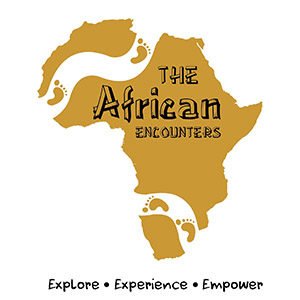EXPLORING THE IK PEOPLE OF UGANDA
Uganda, nestled in East Africa with a population of over forty-five million, is celebrated for its rich tapestry of ethnic diversity. Among the myriad ethnic groups here, the Ik people of Uganda stand out as an indigenous community with a unique cultural identity.
Situated in the northeastern reaches of the country, near the Kenyan and South Sudan border within the Karamoja region, the Ik people of Uganda inhabit the rugged terrain of the Morungole Mountains. They are primarily pastoralists, deeply intertwined with the practice of cattle herding for sustenance.
If you are a culture lover, bitten by a travel bug, always probing to be in a new place, meeting up with new people and interacting is diverse cultures, a combined South Sudan and Uganda tour is a perfect gem for you. It offers the real African encounters, from the Dinka cattle camp to the IK people of Murongole mountain in the Karamoja region in Uganda is just that dream cultural safari you have always saved for.
The allure of the Ik people of Uganda lies not only in their breathtaking natural surroundings but also in their traditional way of life and robust cultural heritage, which beckons curious travelers from far and wide. Here, we delve into the distinctive aspects of Ik culture that set them apart from neighboring tribes:
Social Organization: Unlike many other tribal communities characterized by communal cooperation, the Ik people of Uganda exemplify a culture of individualism and self-reliance. Each family unit predominantly fends for itself, with limited communal activities. This unique social structure has piqued the interest of tourists seeking firsthand insights into the Ik way of life.
Language: The Ik people boast a distinct language known simply as "Ik," which sets them apart from neighboring tribes and national languages spoken across Uganda. Falling within the Kuliak family of the Nilotic languages, the Ik language offers visitors an opportunity to immerse themselves in a linguistic tradition that echoes the community's rich cultural heritage.
Dwelling: Traditionally, the Ik people of Uganda crafted small, temporary shelters using grass and sticks for protection against the elements. Today, however, they have transitioned to more permanent dwellings constructed from mud and thatch. The architectural evolution of Ik housing offers visitors a glimpse into the community's adaptive spirit and resourcefulness.
Religion and Beliefs: While neighboring tribes have embraced Christianity, the Ik people maintain traditional animistic beliefs, revering spirits and sacred natural sites. Rituals and activities aimed at appeasing these spirits underscore the community's deep-rooted spiritual connection to the land.
Food and Subsistence: Initially reliant on hunting and gathering, the Ik people of Uganda have transitioned to subsistence farming, cultivating crops such as maize, millet, and sorghum on small plots of land. Their diet includes a variety of fruits, vegetables, and honey, reflecting a balance between tradition and adaptation.
Clothing and Adornment: Historically, the Ik favored minimal clothing due to the region's warm climate. However, external influences from neighboring tribes have led to the adoption of more diverse attire, including shirts, trousers, and dresses, showcasing the community's openness to cultural exchange.
Gender Roles: Gender roles within the Ik community are clearly defined, with men primarily engaged in hunting, farming, and construction, while women undertake household chores, childcare, and plant gathering. These roles underscore the community's traditional values and division of labor.
Engaging with Ik Culture
Visitors eager to experience the rich tapestry of Ik culture can partake in a myriad of immersive activities. They can stay with local families in traditional huts to gain deeper insights into Ik family structures and daily routines. Engaging in communal work and attending traditional ceremonies allows tourists to forge meaningful connections with Ik locals and gain a deeper understanding of their customs.
Learning about traditional Ik crafts such as basket weaving, pottery, and beadwork, and even trying their hand at crafting under the guidance of skilled artisans is another enriching experience. Embarking on guided tours led by local guides, exploring significant landmarks, and interacting with community members provide invaluable insights into daily life. Additionally, visitors can discover the breathtaking beauty of the Morungole Mountains through guided hikes and nature walks, immersing themselves in the region's diverse flora and fauna.
It's imperative for tourists to approach these experiences with respect, sensitivity, and a genuine desire to learn and understand Ik culture. Following the guidance of local guides and respecting cultural norms ensures a meaningful and enriching experience for all involved.
As travelers embark on this cultural odyssey, they not only discover the essence of Ik identity but also foster mutual respect and appreciation for the diverse tapestry of human civilization in Uganda. So do you want to have the real African encounters with the IK people of Uganda, we are ready to take you there with our customized packages that suit your needs.





